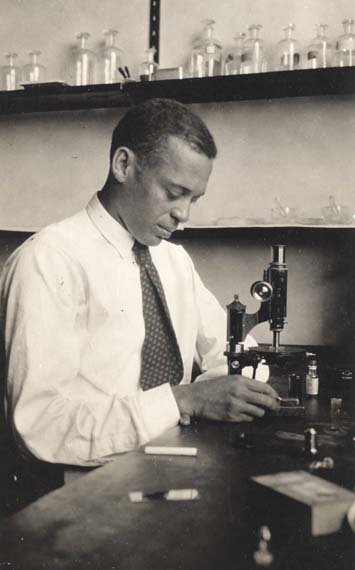Understanding Fertilization: The Contributions of Ernest Everett Just
In the early 20th century, opportunities in the sciences for Black Americans were few and far between, due to racial prejudice that halted advancement in academia for non-white scientists. During this time, Ernest Everett Just not only became one of the most prominent biologists of his generation, he also helped set the foundation for understandings of egg cells and fertilization that would support the work of a generation of future scientists – even as he was barred from teaching in most American universities due to the color of his skin.
Early Life
Ernest Everett Just was born in Charleston, South Carolina in 1883. When Just was only four years old, his father died of alcoholism, leaving his single mother, Mary Just, to provide for the her family by working in the phosphate mines of nearby James Island. Despite facing the twin hardships of racism and single motherhood, Mary Just rose to become a leader of the local Gullah (a Creole-speaking African-American culture) community of James Island, eventually named “Maryville” in her honor. At James Island, Mary founded and directed a school for Black children, educating Just and encouraging him to become a teacher.
By the age of 15, Just had already achieved a certification that made him eligible to teach at any Black school in South Carolina. But Just’s interests lay outside of teaching, and in 1900 he attended a college preparatory school in New Hampshire, where he was the school’s only Black student. This eventually led him to Dartmouth, where Just graduated as the only magna cum laude in his class, majoring in biology.
Eager to advance further in academia, Just nevertheless found himself, as a Black man, shut out from almost all faculty and teaching positions in American universities – both in the north and south.
Scientific Career
Just instead began turned to teaching English and Biology at Howard University, a renowned Historically Black College (HBC) in Washington, D.C. It was around this time that Just’s career took off. Interested in the workings of cells since Dartmouth, Just accepted an offer to research at the Marine Biological Laboratory in Woods Hole, Massachusetts. There, he undertook experimental embryonic research on marine invertebrates — specifically marine worms — with a special interest in the nature of the female egg cell. His research revealed important roles of the ectoplasm, or surface of the egg, in fertilization, and showed that a sperm has as an equal probability of entering an egg at any point on its surface.
These findings, which Just would later publish in a doctoral dissertation at the University of Chicago, would help propel understandings of the egg’s role in fertilization forward, and later would be used as a foundation for other scientists studying developmental biology. But even after earning a doctorate and the prestigious Spingarn Medal, awarded to African Americans who had achieved the highest accomplishments in their field, Just still struggled to find a university willing to bring him on as a professor due to his race.
Just Heads to Europe
Frustrated with limited prospects in the States, Just moved forward to a new continent altogether: Europe, which by then was in the period of scientific and cultural renaissance between the two World Wars. In Naples, Italy and Paris, France, Just found opportunities open to him that would have been impossible in the face of racism in the United States. During this time, he published two influential books on cell biology, Basic Methods for Experiments on Eggs of Marine Animals and The Biology of the Cell Surface, and even became the first American to be invited to research at the Kaiser Wilhelm Institute in Berlin, Germany, a position that was cut short with the rise of Nazi Germany and its racist policies in 1933.
Just would spend the majority of the rest of his life in Europe, mostly in France. In 1940, he and his German-born wife were both held for months in a prisoner-of-war camp in France during the Nazi invasion, where Just’s already failing health declined even further. After diplomatic efforts led to his release, Just attempted to re-start his career in the States, only to find himself once more barred from most universities as a Black man. Returning to Howard University, one of the few institutions that would allow him to continue his research, Just died of pancreatic cancer only a year after his return to the States.
Just’s Contributions to Biology
Like many Black scientists of his time, Just’s accomplishments and brilliance in his field were overlooked through much of the 20th century while the work of his white contemporaries was celebrated. Today, he is finally being recognized as one of the first scientists to truly understand the role of the cell’s surface in an organism, and for expanding scientists’ understanding of the role of eggs during the fertilization process.
More recently, Just has been featured at several symposiums and research prizes, such as at the University of Chicago and Dartmouth, in honor of his scientific and professional accomplishments in the face of overwhelming racial prejudice in the sciences.


